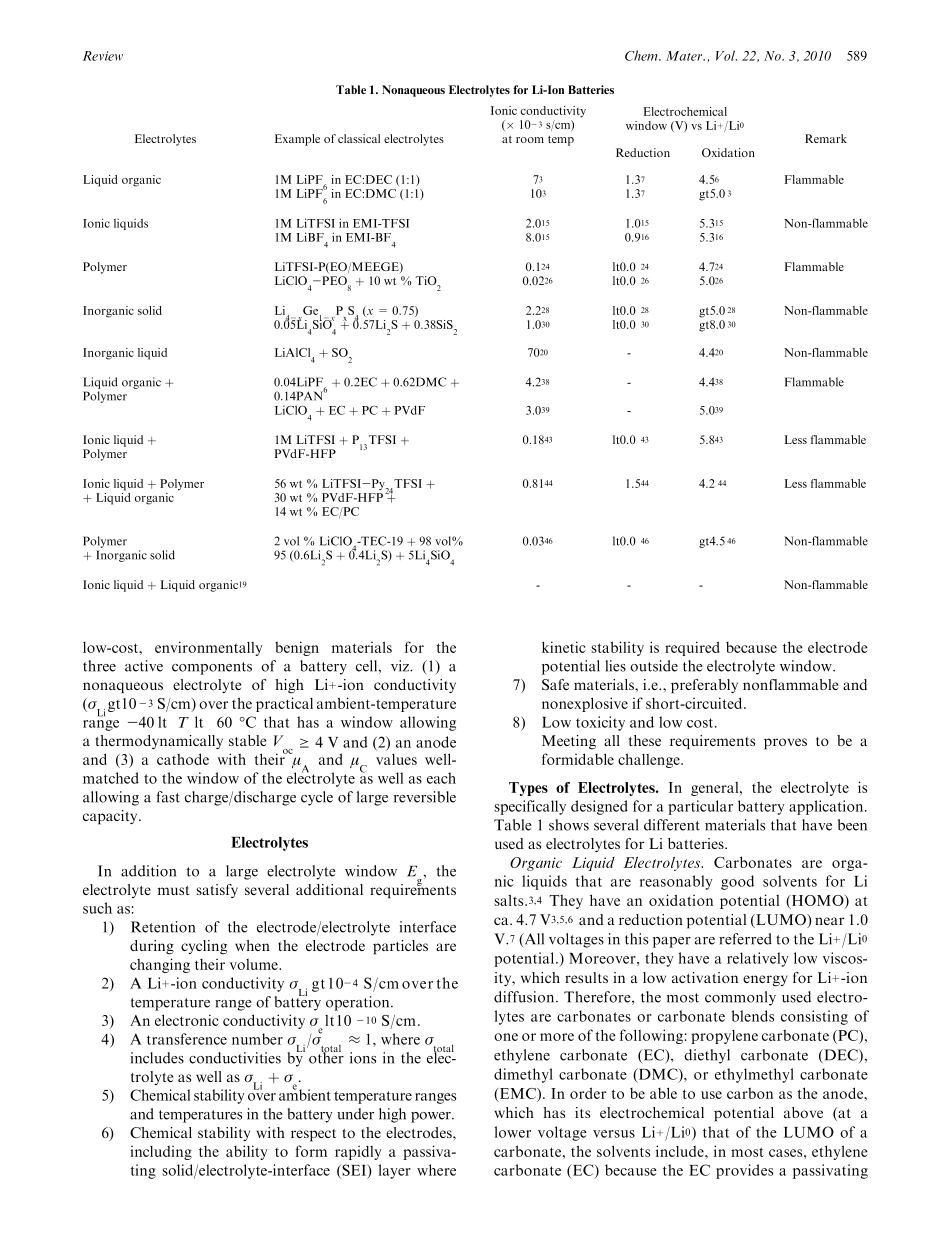pubs.acs.org/cmPublished on Web 08/28/2009r 2009 American Chemical SocietyChem. Mater. 2010, 22, 587–603587DOI:10.1021/cm901452zChallenges for Rechargeable Li Batteries†John B. Goodenough* and Youngsik KimTexas Materials Institute, University of Texas at Austin, Austin, Texas 78712Received May 27, 2009. Revised Manuscript Received July 9, 2009The challenges for further development of Li rechargeable batteries for electric vehicles arereviewed. Most important is safety, which requires development of a nonflammable electrolyte witheither a larger window between its lowest unoccupied molecular orbital (LUMO) and highestoccupied molecular orbital (HOMO) or a constituent (or additive) that can develop rapidly a solid/electrolyte-interface (SEI) layer to prevent plating of Li on a carbon anode during a fast charge of thebattery. A high Liþ-ion conductivity (σLi > 10-4 S/cm) in the electrolyte and across the electrode/electrolyte interface is needed for a power battery. Important also is an increase in the density of thestored energy, which is the product of the voltage and capacity of reversible Li insertion/extractioninto/from the electrodes. It will be difficult to design a better anode than carbon, but carbon requiresformation of an SEI layer, which involves an irreversible capacity loss. The design of a cathodecomposed of environmentally benign, low-cost materials that has its electrochemical potential μCwell-matched to the HOMO of the electrolyte and allows access to two Li atoms per transition-metalcation would increase the energy density, but it is a daunting challenge. Two redox couples can beaccessed where the cation redox couples are “pinned” at the top of the O 2p bands, but to takeadvantage of this possibilit...


